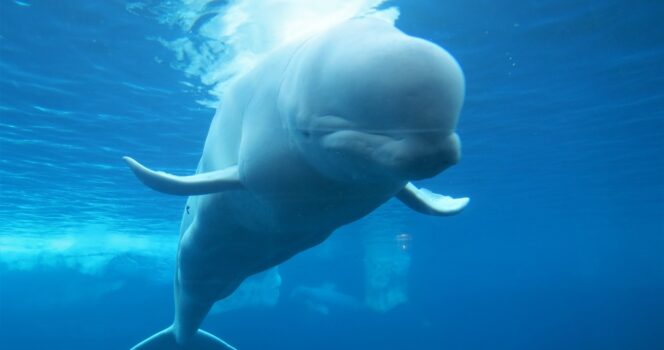
The animal kingdom continues to surprise us with its many hidden wonders.
However, there are certain animals that stand out more than others and immediately make headlines due to their strange appearance or unusual nature.
Now, I will be the first to admit that when I saw the image of this peculiar “penis snake,” I initially dismissed it as a joke.
But to my surprise, it turned out to be a real animal. So, follow me as I unravel the story behind the viral image that has baffled thousands of people…
Throughout history, objects with phallic shapes have always attracted attention and curiosity. A few years ago, a series of images circulated on the web showing a creature that left many shaking their heads in disbelief.
The mysterious and strange-looking animal got some fitting nicknames such as “penis snake,” “blind snake,” or “man-aconda.”
It’s not what you think
But no, it’s not what you think it is.
Despite its striking resemblance to a snake, the creature is known as Atretochoana eiselti, and belongs to a completely different animal category. It is actually an amphibian more closely related to the salamander and is the largest of the few known lungless tetrapods.
This rare animal lives in the waters of the Amazon in Brazil and remained a rare find for a long time. It was first discovered by Sir Graham Hales during an expedition with Sir Brian Doll in the late 1800s.
However, it wasn’t until 1968 that the A. eiselti was first described. Further research and analysis led to a reclassification in 1996, giving it the status of a unique and exclusive species, Atretochoana.
In 2011, this worm-like salamander was rediscovered in the Amazon region. The “penis snake” exclusively lives in the Amazon river and its largest tributary, the Madeira river in Brazil. It is an exclusive resident of this specific area, with no documented observations elsewhere in the world.
Amphibian without lungs and limbs
The viral photos that captured the internet a few years ago date back to 2011. A whole family of phallic-shaped creatures was found on the bottom of the Madeira River in Brazil, which had been drained for the construction of a hydroelectric dam for research.
According to Julian Tupan, a biologist at the company Santo Antonio Energy involved in the dam’s construction, not much is known about these lungless, limbless amphibians.
“Of the six we collected, one died, three were released back into the wild, and the remaining two were kept for study,” he told Estadao, according to The Sun from the UK.
Tupan emphasized that the “snakes” pose no threat and are highly unlikely to exhibit aggressive behavior.
“Despite looking like snakes, they are not reptiles and are more closely related to salamanders and frogs. We think the animal breathes through its skin and likely feeds on small fish and worms, but nothing has been proven yet.
“The Amazon is a box full of surprises when it comes to reptiles and amphibians. There is much more to discover.”
Natural habitat
According to an article in the Brazilian scientific journal Boletim do Museu Paraense Emílio Goeldi: Ciências Naturais , one of the animals found in the riverbed was extensively photographed. Some of the animals were released back into their natural habitat in the Madeira River. Others were sent to the Emilio Goeldi Paraense Museum in Belem, Brazil.
The most widely distributed photo, published on Julian Tupan’s Instagram page, shows an adult female A. eiselti measuring just under 40 centimeters long.
Mysterious creatures
Despite the fascination surrounding these intriguing creatures, much remains shrouded in mystery. This lack of knowledge still limits our understanding of these creatures.
One puzzling aspect that baffles researchers is their dietary preferences. Scientists speculate that the phallus-shaped creatures likely feed on small fish, worms, and other invertebrate aquatic animals. But it is clear that further extensive research is needed to confirm these assumptions.


Another mystery is their respiratory system, as the way they breathe remains unconfirmed. The discovery of the six specimens in 2011 only made this puzzle more complex. Particularly intriguing was the location of their discovery, with limited cold, fast-flowing water. Warmer water is known to contain less oxygen, making their lungless existence even more exceptional.
These recent findings may indicate that the species is spread throughout the Brazilian Amazon region and possibly also in Bolivia.



